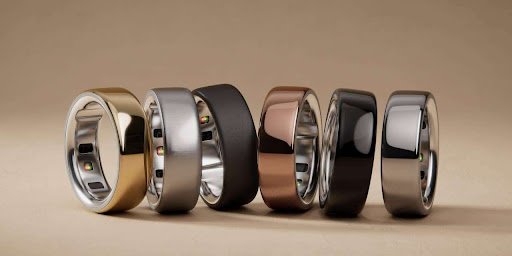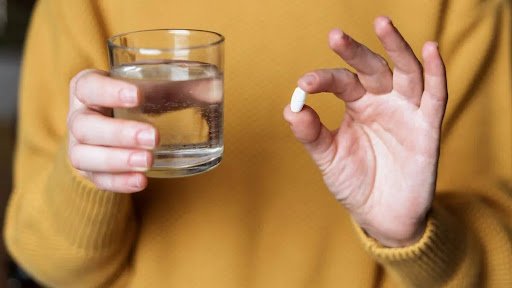Medical emergencies can strike without warning, and in critical moments, every second counts. For individuals with chronic illnesses, allergies, or special medical conditions, it’s crucial to have a way to quickly communicate health information to first responders. While medical alert bracelets and necklaces have been popular for decades, a newer, more discreet option has emerged — the medical alert ring.
This article explores what medical alert rings are, how they work, their benefits, and how they compare to other health-focused wearable devices like health rings for men. Whether you’re managing a medical condition yourself or looking for a thoughtful gift for a loved one, this guide will help you understand the value of medical alert rings in today’s healthcare landscape.
What Is a Medical Alert Ring?
A medical alert ring is a wearable ring designed to provide essential medical information in case of emergencies. It typically features engraved medical details or has embedded technology (like NFC or QR codes) that first responders can scan to access a person’s medical history.
These rings are especially useful for people with conditions such as:
- Diabetes
- Epilepsy
- Heart conditions
- Severe allergies
- Blood disorders
- Dementia or Alzheimer’s
- Organ transplants
- Autism
Some rings are simple and purely engraved, while others are part of smart systems that sync with online medical profiles.
Why Choose a Medical Alert Ring?
1. Discreet and Stylish
Unlike bulky bracelets or obvious necklaces, a medical alert ring is subtle. It often resembles a regular piece of jewelry, making it appealing for those who value aesthetics and don’t want to draw attention to their condition.
2. Always On You
Rings are harder to forget than wallets or phones. Since most people wear rings daily, having one that carries critical health data ensures you’re always prepared — even if you leave your phone behind.
3. Life-Saving Information
In an emergency where you can’t speak or respond, first responders can identify your condition quickly and take appropriate action. Medical alert rings can prevent misdiagnosis or delayed treatment.
4. Durable and Comfortable
Most medical alert rings are made from durable materials like stainless steel, titanium, or silicone, ensuring long-lasting use without causing skin irritation.
Types of Medical Alert Rings
There are several types of medical alert rings depending on your needs and lifestyle:
A. Engraved Rings
These are classic rings with key medical information engraved directly onto the band. Common engravings include:
- Medical condition(s)
- Allergies (e.g., “Allergic to Penicillin”)
- Emergency contact number
- “ICE” (In Case of Emergency)
B. Smart Medical Alert Rings
These rings use technology to store detailed health information. They may include:
- NFC (Near Field Communication) chips: These can be scanned by smartphones to access a secure medical profile online.
- QR codes: Engraved or printed on the ring to direct responders to an emergency profile.
- Bluetooth-enabled rings: In rare cases, these can sync with health monitoring apps, similar to health rings for men.
How Do Medical Alert Rings Compare to Health Rings for Men?
With the rise of wearable technology, many health-conscious consumers are turning to smart rings to track their well-being. So how does a medical alert ring compare to health rings for men?
Purpose and Function
- Medical alert rings are primarily designed for emergency identification. Their goal is to communicate life-saving medical information to healthcare professionals.
- Health rings for men, on the other hand, are focused on wellness monitoring. These rings track metrics like:
- Heart rate
- Blood oxygen levels
- Sleep quality
- Body temperature
- Activity levels
Popular brands like Oura and Ultrahuman offer advanced health rings that give insights into fitness and recovery but don’t necessarily store or communicate emergency data.
Technology
- Medical alert rings may be low-tech (just engraved) or high-tech (NFC/QR code).
- Health rings are typically advanced, equipped with sensors and integrated apps.
Target Users
- Medical alert rings are ideal for people managing health risks, chronic illnesses, or allergies.
- Health rings are popular among fitness enthusiasts, athletes, or men looking to optimize health performance.
That said, there is growing interest in hybrid rings that combine both emergency information and health tracking, which may soon blur the line between these categories.
Who Should Wear a Medical Alert Ring?
Medical alert rings are suitable for a wide range of individuals, including:
- Elderly individuals: Especially those living alone or with memory issues.
- Children with medical needs: A ring can be a more secure option than bracelets.
- People with severe allergies: Such as anaphylaxis to foods or medications.
- Athletes: Those with health risks who may need immediate help during exercise.
- People with rare diseases: To inform healthcare providers in unfamiliar settings.
Even individuals who travel often may find it beneficial to wear a medical alert ring, especially if they have a condition that could require urgent care in a country where they don’t speak the language.
What to Engrave on a Medical Alert Ring
If you’re opting for a custom-engraved medical alert ring, consider including:
- Your full name
- Medical conditions
- Allergies (e.g., medications, foods, insect bites)
- Blood type
- Emergency contact (name and phone)
- Any medical devices (e.g., pacemaker, insulin pump)
- The phrase: “See wallet card” if you carry a more detailed document
Keep it short, clear, and medically relevant. Most rings can only accommodate 2–4 lines of text.
How to Choose the Right Medical Alert Ring
When selecting a ring, consider:
- Material – Choose hypoallergenic, durable materials like titanium or stainless steel.
- Design – Pick a style that suits your taste so you’ll wear it consistently.
- Engraving vs. Smart – Decide whether you want visible information or a scannable code/NFC chip.
- Fit – Ensure the ring is comfortable and sized properly for long-term wear.
- Customization – Some vendors offer multiple languages, emergency symbols, or custom color options.
Final Thoughts
A medical alert ring is more than just a piece of jewelry — it’s a potential life-saver. Whether you’re managing a chronic condition, have severe allergies, or want peace of mind for your loved ones, these rings provide critical support when it matters most. And with discreet, stylish options available today, you don’t have to sacrifice design for safety.
While health rings for men offer fantastic health-tracking capabilities, they serve a different purpose. Combining both types of wearable tech — or choosing one that fits your specific needs — can provide a comprehensive approach to managing your health.
If you or someone you care for could benefit from carrying health information at all times, a medical alert ring is a smart, stylish, and life-protecting choice.



